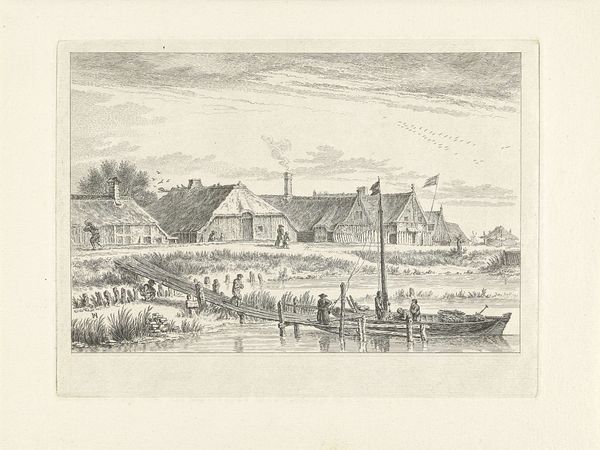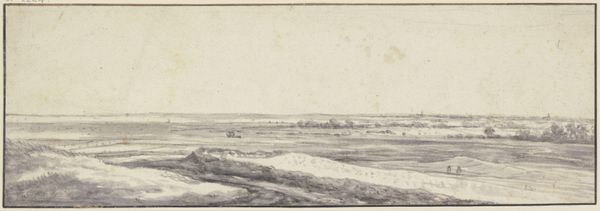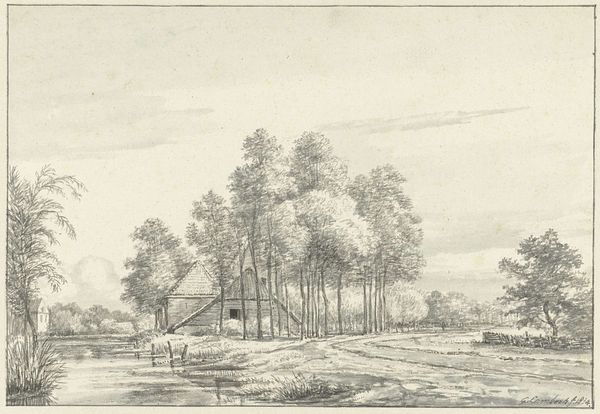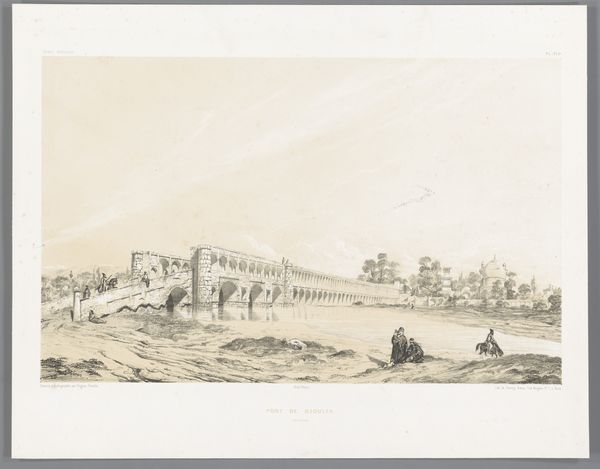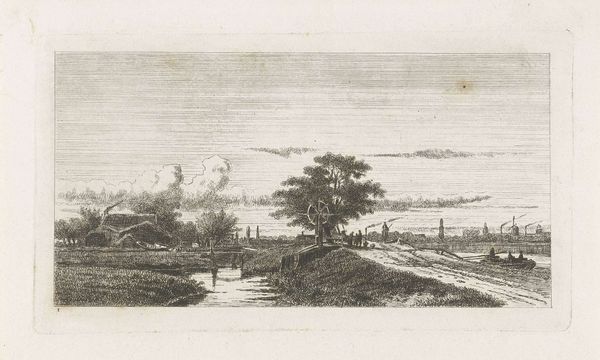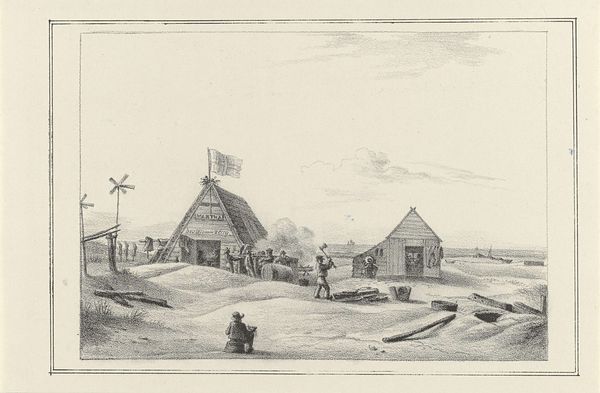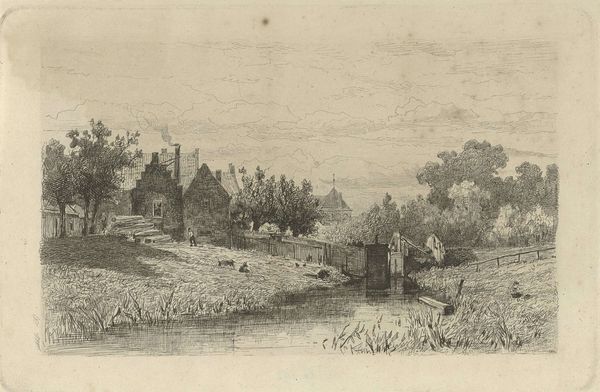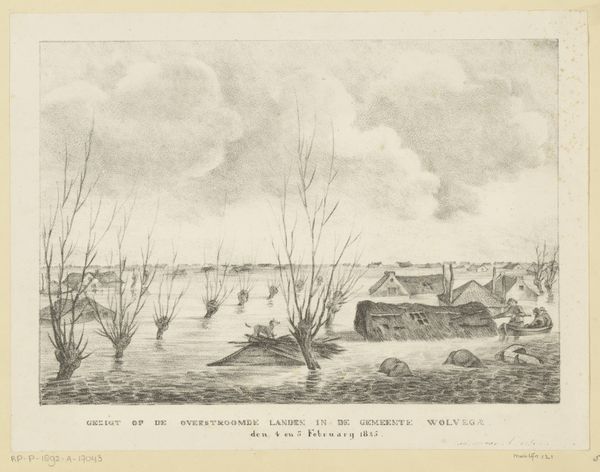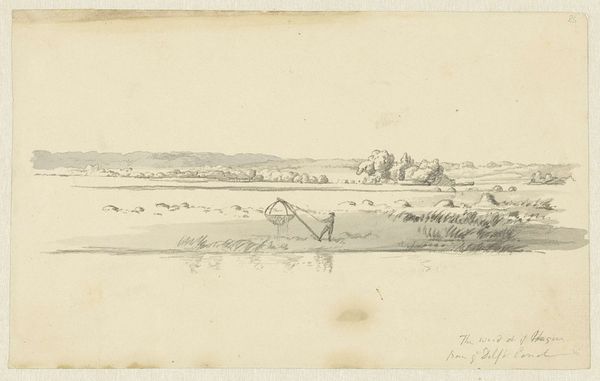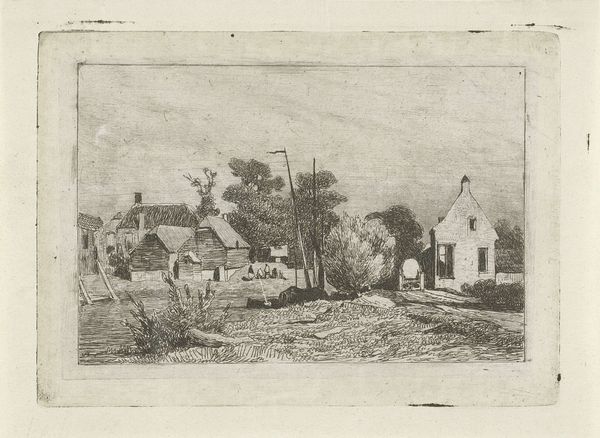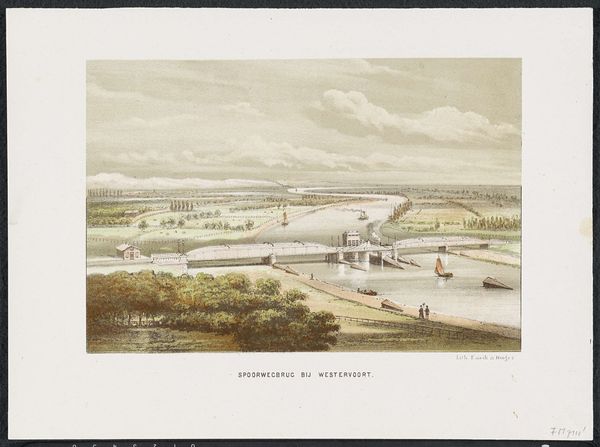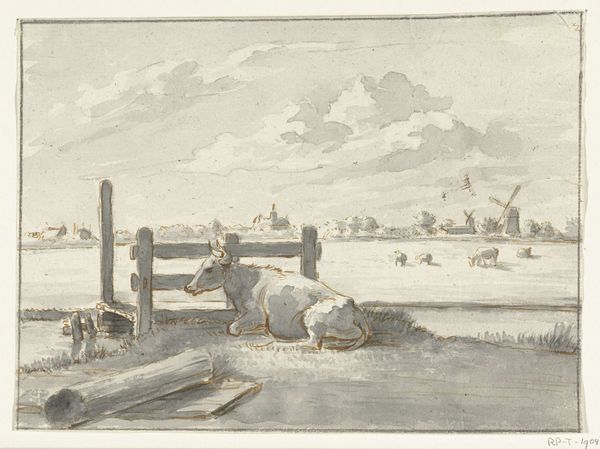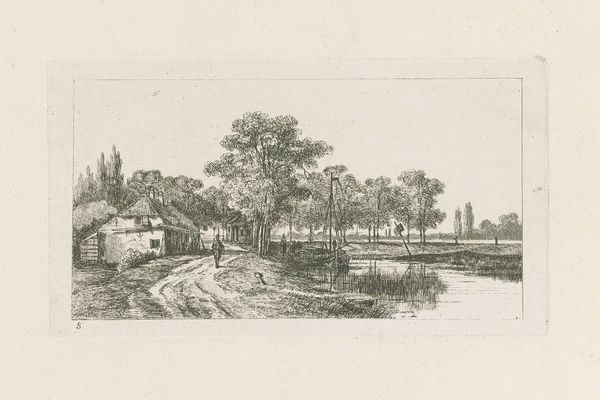
watercolor
#
neoclacissism
#
landscape
#
etching
#
watercolor
#
15_18th-century
#
watercolour illustration
#
watercolor
Dimensions: height 183 mm, width 495 mm
Copyright: Rijks Museum: Open Domain
Curator: Let's discuss Louis Ducros's "Gezicht op Canosa brug over Ofanto rivier in Puglia," created in 1778. It is currently held at the Rijksmuseum. What are your initial impressions? Editor: There’s a muted tranquility to it. The colors are desaturated, creating this washed-out, almost dreamlike quality that hints at something beyond just the landscape. A subtle power dynamic seems present with the travelers posed upon horses juxtaposed against the land they traverse. Curator: Precisely. Observe the artist’s mastery of perspective. The bridge, rendered with geometric precision, receding into the hazy distance. Note also the calculated arrangement of the classical ruins, punctuating the composition and reinforcing a sense of order. Editor: While the precision is evident, I can't help but wonder about the context of portraying Puglia through this Neoclassical lens. It feels like a sanitization, an imposition of idealized forms onto a region undoubtedly marked by a complex history of colonization and struggle. Who exactly are these leisurely figures and what stories aren't being shown in this curated vista? Curator: You raise a valid point about potential omission. However, consider Ducros's careful attention to tonal values. The subtle gradations in the watercolor, creating depth and atmospheric perspective are formally notable in this illustration, as well as the delicate use of etching adding definition to forms such as the bridge structure. Editor: I concede the technical skill, but what did such artistry contribute toward? Ducros creates a sense of idyllic stability, essentially ignoring the social reality of 18th-century southern Italy, an area steeped in the legacy of inequitable social conditions and labor divisions. Doesn't art have a responsibility to, at minimum, acknowledge those realities? Curator: We could also suggest that art holds the unique role of interpreting a reality through the personal vision of the creator. The artist's intentional structure here provides balance but does so via careful material application. In doing so, a vision has been masterfully recorded. Editor: And who’s vision takes precedence when it directly overwrites and conceals historical burdens? It really makes you wonder whose stories survive versus are systematically erased within historical narratives of landscapes. Curator: It appears we find ourselves contemplating dual interpretations of art history! The beauty, as you see it and I, in that the artwork's details are never confined by temporal limits; interpretation remains a dynamic engagement across history and disciplines. Editor: Indeed. It reminds me that our role isn't to provide simple answers, but to ask the critical questions to deepen appreciation while we consider visual artistry that reflects the world in nuanced detail.
Comments
No comments
Be the first to comment and join the conversation on the ultimate creative platform.

